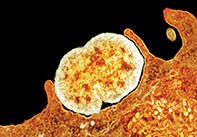Gaining control of gonorrhoea
Gonorrhoea is still with us and the number of cases is increasing as the era of extensive drug resistance approaches. This sexually transmissible infection (STI) is caused by the bacterium Neisseria gonorrhoeae, and in Australia mainly affects gay men in urban areas and Aboriginal and Torres Strait Islander people in remote locations.
Gonorrhoea is important because of its possible complications, such as upper genital tract disease in women resulting in tubal infertility and increased risk of ectopic pregnancy, epididymitis in men, disseminated infection and, mainly in neonates, eye disease. People with gonorrhoea are often concurrently infected with chlamydia, which is associated with similar complications. Gonorrhoea also promotes the sexual transmission of HIV infection, and the two epidemics frequently coincide.

